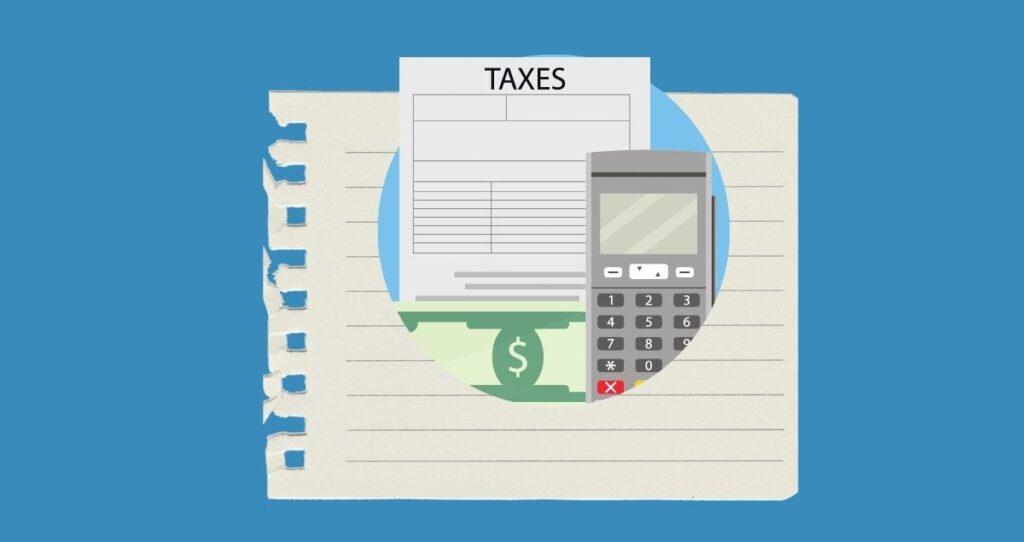Imagine having enough money to retire comfortably, travel the world, or pursue your passion projects without worrying about financial constraints. This is the dream for many but the reality for few. In today’s fast-paced and ever-changing world, learning how to invest has become crucial for securing a stable financial future. However, the investing world may seem daunting and overwhelming, especially for beginners.
Where do you start? How do you navigate through the complex jargon and endless options? This article will provide a step-by-step guide on investing your money like a pro, even without prior knowledge. I will cover essential steps, including deciding your investment goals, creating a portfolio, opening a brokerage account, the best investments to buy, and tips to manage risk when investing.
What is investing?
In simple terms, investing is allocating funds into assets and other securities, hoping to make a profit in the future. For example, if I buy a stock for $5 and sell it at $20, I would have made a profit of $15. This form of return is known as capital gains, meaning the asset increases in value through appreciation. If the same stock also paid me $7 in dividends, then my total return on investment from this stock would be $22.
You don’t need a lot of money to start investing. You can easily invest $1 and build your portfolio over time. For example, nowadays, you can buy fractional shares of a company’s stocks if you don’t have enough money to buy an entire stock. While there is no minimum or maximum you need to invest, investing at least 10% to 20% of your gross income is always recommended.
Your investment strategies depend on the money you want, risk tolerance, goals, and horizon. For example, if you have $50 to invest, buying a few shares of a company, a mutual fund, or an index fund would be wise.
The primary benefit of investing is receiving a return on your investment. The more returns you receive, the faster you achieve your financial goals.
Before you get too excited about investing, you must remember that investing always comes with risk. That is why picking the right investment, diversifying your portfolio, and minimizing your risk are essential to maximizing return on investment.
Now that you know what to expect from investing, it is time to learn how to invest your money. The following is a step-by-step guide to investing money, especially when new to investing.
1. Establish your investment goals.
The first step in your investment journey is to decide why you need to invest your money. This is like a goal or a reason to get out of your comfort zone, which also helps you pick the right investments. For example, if you have a low income and want extra cash to help you pay your bills, investing your savings in fixed-income assets such as bonds, high-yield deposit accounts, and dividend stocks will guarantee a regular interest payout.
In this case, earning passive income in interest to help you pay your bills would be your investment goal. You can also see that deciding precisely what you want automatically shows you which investment to pick.
Other investment goals may include growing your retirement account, investing for early retirement, growing your money to buy a house, saving money to earn, donating your earnings, etc.
2. Decide your investment horizon(short-term or long-term)
There are many ways to invest money, and your investment strategies depend on your financial goals. Typically, you can have a long-term investment or a short-term one.
- Short-term investing. This investment strategy involves buying and selling assets in less than a year. Any investment you hold for more than a year is considered long-term. For example, a person who swing-trade stocks or flip houses is considered a short-term investor.
- Long-term investing. With this investing strategy, you buy assets and hold them for five or even 10 years before selling. The benefit of this strategy is to grow wealth through compounding interest.
When does it make sense to pick short-term investments?
If you want to use your money for a short-term goal, a short-term investing storage will work best for you. For example, if you buy a house in 11 months, investing your savings in short-term investments will benefit you the most. In this case, you could invest in short-term investment options with fewer restrictions, such as high-yield savings accounts, bonds, certificates of deposit with a 10-month maturity, or buy stocks with managed risks.
- The downside of short-term investing is that you will pay income tax on your earnings if you sell within 12-month periods.
- The benefit of short-term investing is access to your funds, which is excellent, especially when saving for a short-term goal, such as a house down payment.
When does it make sense to buy long-term investments?
Long-term investing is another alternative way to invest money. Investing money for the long term makes sense when you don’t need it. The best investment options to invest for the long term include investing in your IRA, buying long-term bonds, contributing to your 401K, or buying index funds and mutual funds. You can also purchase and hold dividend stocks for a few years before selling.
- The downside of long-term investment is that you might not have access to your funds for a long time.
- The benefit of long-term investing is the maximum return on investment due to compounding interest and paying capital gain tax lower than income tax.
3. Seek help from a financial advisor.
Investing is not something you can do randomly and succeed. If you throw your money into the stock market, hoping to make a profit, you are no different than a person betting thousands at a casino.
The knowledge of markets, investment strategies, risk management strategies, and learning more than the basics of investing is essential to your success.
If you have never invested money before and are uncomfortable putting in the work to learn or doing git yourself, working with an advisor will be a great way to invest money. For example, you can let your advisor help you decide on securities and assets you must buy or sell at a particular time. Your investment advisor can also have 100% control your portfolio and report to you every month or quarter.
4. Know your risk tolerance.
Before you invest money in any asset or decide how much to invest and where to invest, you first need to understand your risk tolerance.
In short, risk tolerance refers to how much risk you are willing to take to achieve the expected investment return. For example, assume a stock you want to invest in trades at $30 per share and think the stock will increase and reach $65 in the next 12 months. Since this investment sounds excellent, you decided to buy the stock at $30 per share.
Because you are not 100% sure about the direction of the stock, you decided to set up a stop-loss order at $25 per share. If the stock price does not move in your anticipated direction, your stop-loss will be converted into a market order when the price reaches $25 per share. In this case, your shares will be sold at the best market price possible.
This example tells you that you are willing to lose $5 per share to make $30 share on that investment.
Your risk tolerance, in this case, is $5. This was just a simple example to give you an overview of risk tolerance. But, in investing, risk tolerance goes deeper and beyond setting up stop losses.
Use risk tolerance to establish a portfolio.
One of the benefits of knowing your risk tolerance when investing is that it helps you build a portfolio and buy the right investments. Here is a list of 5 types of portfolios based on risk tolerance.
- Income portfolio. This type of portfolio is made of 80% fixed income and 20% equities, and it is suitable for someone who wants to earn passive income in the form of interest and dividends. An income portfolio would be good for you if you don’t like volatility. The downside of this portfolio is that you get less return on investment.
- Conservative/defensive portfolio. This one is made of 60% fixed income and 40% equities. With this type of portfolio, you still have more fixed income but get a little exposure to more equities. This means you earn more ROI than you would with an income portfolio.
- Moderate portfolio. 40% fixed income and 60% equities. This portfolio offers a higher return on investment than the income and conservative portfolios, but you also experience more volatility than both.
- Growth portfolio. This is the most commonly formed type of portfolio, especially for younger generations and those who want to grow. With this portfolio, 80% of your money is invested in equities and the remaining 20% in fixed-income assets. Remember that holding 80% of your investments also means you experience higher volatility.
- Aggressive portfolio. With an aggressive portfolio, you invest 100% of your money in equities. This type of portfolio has the highest volatility and risk but also has the potential for the highest return on investments. An aggressive portfolio is not recommended.
Note: Always know how much you are willing to risk on an investment before investing and form your portfolio based on your risk tolerance.
Equities mean stocks and stock funds such as mutual, exchange-traded, and index funds. On the other hand, fixed-income assets are any investments that pay a fixed interest, such as dividend stocks, bonds, high-yield deposit accounts, and debt.
5. Decide where to invest money.
At this time, you will decide where you will need to invest your money. There are a lot of investment opportunities, and things can get slightly confusing when you don’t know where to look. When deciding where to invest your money, you should always consider your risk tolerance, investment time frame, and investment goals.
For example, if you are OK with the volatility in the market, you can invest in the stock market and other volatile securities such as currencies, ETFs, etc. On the other hand, if you are not OK with volatility, you can invest most of your money in less volatile investments such as high-yield savings accounts and bonds and hold a small percentage in stocks.
Examples of investments you can buy
- Open an Individual retirement fund (IRA). You grow your account tax-free and pay no tax on qualified distributions during retirement.
- 401k plans are great for building wealth faster as you defer paying taxes. You can also get free money in employer match to the plan, which is 100% return.
- High-yield Savings accounts. These accounts offer as high as 5% while still allowing you access to the money.
- Invest in certificate of deposit (CD). If you want to earn a fixed interest but also protect your savings, invest in Certificates of deposit (CDs). CDs can earn you as much as 50% APY. The downside of investing in CDs is that you won’t have access to your funds until maturity.
- Invest in money market accounts. Money market accounts are issued by banks, credit unions, and online financial institutions and pay higher rates than savings accounts.
- Invest in mutual funds. Mutual funds pool money from different investors and then invest in stocks, bonds, and stock funds, and you get a typical return of 7% to 12% yearly.
- Exchange-traded funds (ETFs). ETFs are like mutual funds, except they are traded on stock exchanges like stocks.
- Invest in stocks. You can buy individual stocks of any publicly traded company of your choice. There are two ways you can invest in stocks. You can take long positions if you believe the stock will go up or short positions if you think they will go down. Shorting stocks is risky, and you should have enough experience to succeed. In addition, you will need a margin account to short stocks.
- Invest in bonds. Bonds pay a fixed interest until maturity. You can buy government bonds, corporate bonds, Minis, etc. You can buy corporate bonds from third-party brokerage companies or the TreasuryDirect website.
- Invest in rental properties and real estate in general. Rental properties are great investment options, and some of your options will be condo rental properties, townhouse rentals, single-family rentals, multifamily rental properties, Airbnb, etc.
- Invest in index funds. Like Mutual funds, index funds allow you to invest in many companies simultaneously, giving you direct diversification.
6. Choose a broker
Before investing, you will need an investment account, also known as a brokerage account from a broker. You will use this account to buy and sell securities online without calling anyone. Sticking to established brokerage companies allows you to minimize risk and protect your investments. These companies also offer educational material to help you learn and make informed decisions.
The following are some of the best brokerage companies to choose from.
- E*Trade. Good for trading activities, especially day trading
- Interactive Brokers. Best for advanced trading
- Webull. Suitable for beginners and interactive traders
- Fidelity investment. Good with research material and investment
- TD Ameritrade. It is good for beginners and has educational materials
- Charles Schwab. Good for an individual retirement account and research tools
- Merrill Edge. Good for rewards programs
- TradeStation. Has good platforms to use
- Robinhood is easy to use but has limited educational materials.
7. Open a brokerage account.
Once you decide on the type of investment you want to pursue and the broker, you must create a brokerage account. The entire process of creating a brokerage account can be completed online. Here is a complete guide to opening a brokerage account and the best places to open the account.
Opening a brokerage account is simple and can be completed in minutes.
- Select a Brokerage. Research and compare online brokers based on fees, features, risk, and investment options.
- Create an Account. After picking the broker, go to the brokerage’s website to begin the application.
- Provide Personal Information. Complete the application by filling out the required details like your name, address, SSN, employment information, and the type of account you are opening.
- Identity Verification. Most brokers verify your identity by requiring a photo of your driver’s license or a passport.
- Account Agreement. After completing the form, review your form, sign it, and submit it.
- Fund Your Account: Link your bank account and transfer money into your new brokerage account.
This is the same process you would follow to open an individual retirement account(IRA). For your 401(k) plans, you don’t open the account as these are opened by your company. You must know your login credentials, manage the account, and adjust contributions if needed.
8. Learn the fundamentals of investing and the stock market.
Depending on your chosen investment type, you will need to educate yourself. For example, if you invest in real estate, you must learn how to buy properties, find good deals, buy profitable properties and management styles, etc. Understanding the current market condition and future trends can help you buy the right investments.
If you choose to invest in stocks, you must learn about stocks and the stock markets. The more you know, the better.
Also, the types of learning material you focus on will depend on the kind of investor you want to be. For example, to be a short-term stock trader, you must focus more on technical than fundamental analysis.
The technical analysis will help you analyze stocks’ price movements in the short term by using trading indicators and patterns.
Some investment options, such as savings accounts or CDs, require less education. The only homework you will need is to figure out the one that works best for you and terms that will not jeopardize your other financial needs and goals.
9. Start investing
At this point, you will have everything you need to start investing. Buy the security and assets you want to invest in and diversify your portfolio to minimize risks.
10. Manage your risk
You may need to implement risk management strategies depending on your chosen investment option.
For example, if you have chosen growth investment methods such as investing in stocks and currencies, you must carefully manage your risks. These investments tend to be more volatile and react more to news and economic conditions than others. It is possible to lose all your money in the market.
For this reason, manage your risks all the time. Using stop-loss orders, trailing stop orders, and limit orders will help you manage your portfolio and reduce risks in the short term.
If an investment you have pursued is a loser with no green light on the horizon, exit your position to keep your losses small. You can always recover from a slight loss.
11. Continuously diversify your investments.
The assets you will own in your portfolio will determine your success as an investor. Since the markets do not react the same way under similar economic conditions, it is always important to diversify your funds in different markets. Some markets move up due to the crash of others.
Owning assets from different markets will protect your portfolio from a massive loss.
At the same time, allocate your funds to each asset wisely. You should not put all your eggs in the same basket.
How do you know if the value of an asset you own will not decrease? It is very difficult to know the exact price movement of an asset or security in the future. For this reason, do not put too much money into one investment. Setting up automatic contributions is a great way to stay consistent in your investment journey.








